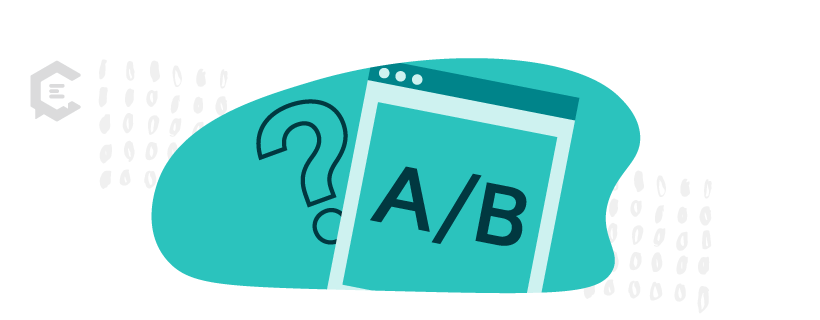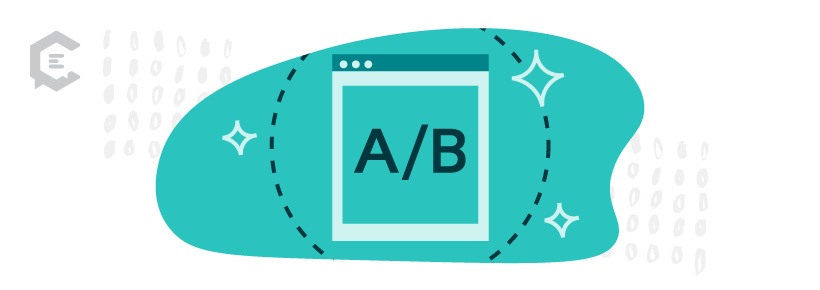If you’ve read about best practices for social media and email marketing content, you’ve likely heard the term “A/B testing.” While not new, this method of refining your content strategy has changed a bit over the years, thanks to new, user-friendly A/B testing tools.
You may be missing out if you’re not yet using A/B testing.

What is A/B testing for content?
The term “A/B test” can be used in a variety of industries. When used in digital marketing, its definition refers to the research methodology of comparing performance data between two pieces of content. Common uses for A/B tests include email messages, Instagram ads, blog posts, landing pages, or any other marketing collateral.
Why do you need an A/B test?
It can be very hard to measure the performance of a single marketing asset. Sure, the clicks or opens may be high, but could they be higher? The value of an A/B test is that it helps you pinpoint the exact trait of your content piece that can yield better results over time.
For example, if you have a new landing page, you won’t know if the headline you’ve written for it is optimized for your audience. By creating a second landing page with a different headline, you can compare both metrics to see what yields the best results. A/B tests create data points that can be analyzed later to continually tweak and improve upon what’s working (or even what’s not).
You could create content without an A/B test, but you would essentially be guessing. Each iteration of content would have no solid scientific basis for its changes from the previous version. You would be blindly trying things in the hope of hitting on something that works, which is not a very effective way to do business.
How to create an A/B test
Performing your first A/B test can be very simple. Here is the basic process:
1. Identify a piece of content you want to improve upon
You likely have several content assets ready to go that you can test to make them their best. This can be a tweet, landing page, or Facebook ad, and it will be the “A” part of the test. Choose an asset with at least one attribute that can easily be swapped out for the “B” part of the test.
2. Create a second version of the content with just one attribute changed
Note that this can be a trait of the actual content, such as the background color or photo in an ad or an attribute of the audience or delivery method. (An example of audience or delivery attributes could be choosing to show the ad to parents of first-graders versus showing it to teachers.)
3. Serve the assets
In order for the test to be scientifically sound, set both pieces of content to run at the exact same time, for the same duration, and to the same audience. (The exception would be for tests where the time or audience is the changed attribute.) The key is to make everything between the two identical except for that single attribute, including the delivery.
4. Gather data
During the entire test, track the data that matters. For a Facebook ad campaign, for example, gather metrics that are relevant to your campaign, such as click-throughs or conversions. Make sure you have the technology in place to get this data before you start the campaign and that the data can be separated between the two assets (not going into one giant data dump).
One of the easiest ways to gather data is through unique tracking links, which many social media and content platforms include as part of their toolkit. Of course, this won’t measure things like impressions, and you may need something like a heatmap tracking tool to see where people are spending the most time on a webpage, for example.
5. Analyze the data
Now’s the fun part. Which piece of content did the best? Perhaps, it’s not even about which performed better but about getting confirmation that your existing strategy is working. If you find that one is consistently doing better than the other, however, use this information to continue on with your next A/B test.
6. Make adjustments, then try again
Doing just one A/B test isn’t enough for a couple of reasons. One, some factors beyond your control may have pushed the winning piece to its success, such as a viral share. You’ll want to be sure that your changes were, in fact, the driving force behind it working so well.
Second, you’ll need to make sure you fully understand why the successful piece worked. Was it that the headline was more direct? Did you use a keyword that resonated with the audience? While you may think you know what made the better piece stand out, it will take a few more tests to fully understand why it performed better.
Ways to use A/B testing
There are practically unlimited ways to use an A/B test, provided you are tracking your data effectively. Digital content of any type can benefit. The next time you update web copy, send out a promotional newsletter, or create a new call to action (CTA), take a moment to create a second, almost-identical asset to play around with. You won’t regret the data you get from running an A/B test, even if you aren’t in a position to capitalize on it right away.





